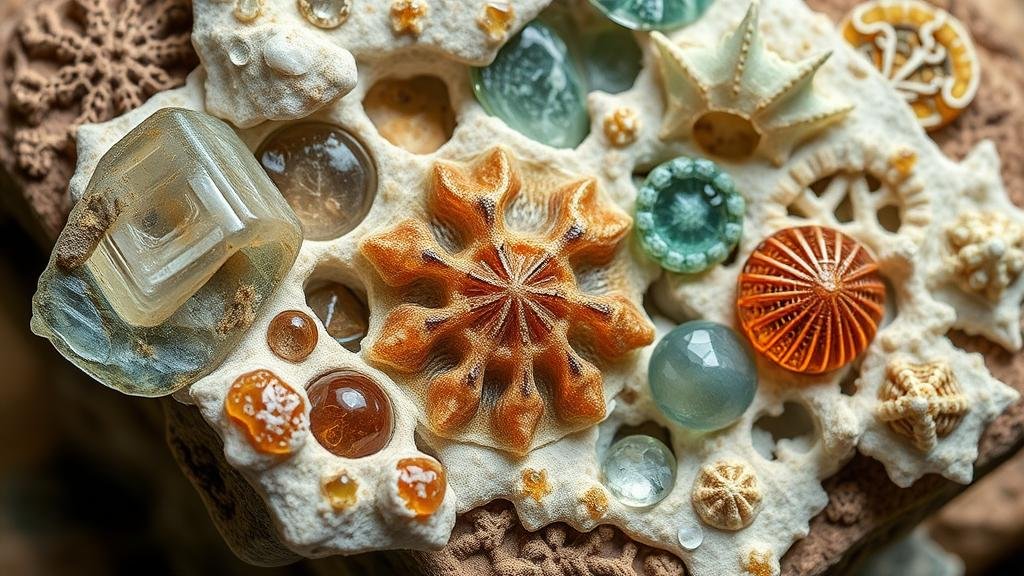The Gem Fossils of Ancient Seas: Combining Nature’s Treasures in One Find
The Gem Fossils of Ancient Seas: Combining Nature’s Treasures in One Find
For rockhounds and mineral collectors, gems are not only a symbol of beauty but also a window into the Earth’s ancient history. Among the most fascinating and sought-after specimens are gem fossils, particularly those formed from the remnants of ancient marine life. These treasures combine the intricacies of fossilization with the allure of gemstones, making them unique collectibles that enhance any collection.
Understanding Gem Fossils
Gem fossils form when the organic materials of deceased marine organisms are replaced by minerals over eons. This process, known as permineralization, can create stunning pieces that exhibit both fossil characteristics and gemstone properties. Common examples include agate, jasper, and opalized fossils, often from sea creatures such as trilobites, ammonites, and corals.
For example, agatized coral is a prime example of a gem fossil. original coral structure is replaced by silica over time, resulting in a vibrant stone that retains the corals intricate patterns. In terms of measurements, agatized coral can vary in size, with pieces often ranging from a few centimeters to several decimeters in diameter, making it an appealing addition to any collection.
The Fossilization Process
The transformation from organic material to gem fossil involves several stages:
- Death of the organism: The marine creature must die and settle on the ocean floor.
- Burial: Sediments cover the remains, protecting them from decomposition.
- Mineral infusion: Mineral-rich waters seep into the remains, slowly replacing the organic material with minerals.
- Time: This process can take thousands to millions of years depending on environmental conditions and the type of minerals involved.
This gradual replacement leads to the creation of stunning specimens that exhibit the original shell or structures intricate patterns, often preserved in great detail.
Popular Types of Gem Fossils
Several types of gem fossils are highly prized among collectors:
- Ammonite: These extinct cephalopods are often found as fossilized shells in sedimentary rock. Their iridescent coloration makes them particularly desirable.
- Trilobite: Known for their segmented bodies, trilobites are frequently found in limestone deposits and can be polished to reveal stunning details.
- Corals: Fossilized coral in an agate form provides both beauty and a colorful history of Earth’s reefs.
Where to Find Gem Fossils
For collectors looking to add gem fossils to their collection, several key locations are renowned for fossil finds:
- Western United States: Areas like the Green River Formation in Wyoming are rich in fish and invertebrate fossils.
- Europe: Fossil-rich sedimentary rock layers in Germany and the UK are excellent spots for ammonites and trilobites.
- South America: The Andean region offers unique opportunities for finding petrified wood and marine fossils.
Local rock shows and mineral expos can also be an excellent place to find gem fossils, as many vendors specialize in unique specimens.
Practical Tips for Rockhounds
To successfully collect and care for gem fossils, consider the following tips:
- Research: Understand the specific laws and regulations regarding fossil collection in your area.
- Physical Care: Avoid exposing fossils to harsh chemicals or direct sunlight to prevent degradation.
- Documentation: Keep records of where and when fossils were collected to increase their provenance and value.
Conclusion: The Allure of Gem Fossils
Gem fossils represent a stunning intersection of natures artistry and geological processes. For rockhounds and mineral collectors, they offer not just aesthetic beauty but also a tangible connection to Earths ancient marine ecosystems. With diverse types, various locations for finding these treasures, and unique care strategies, there has never been a more exciting time to explore the world of gem fossils.
By understanding their history, honing your collection strategies, and appreciating their rarity, you can enhance both your collection and your knowledge of our planets vast and fascinating geological history.



